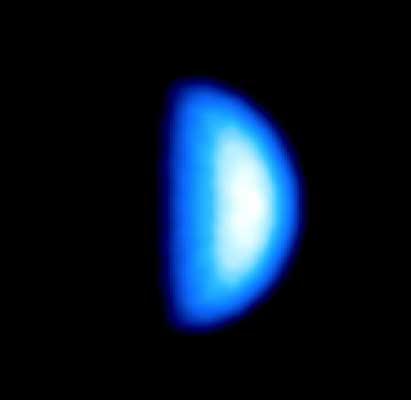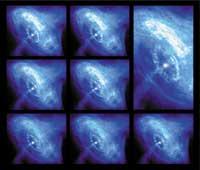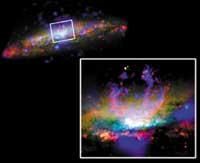New image of Venus
2001/11/30 Elhuyar Zientzia

The upper image of Venus was taken with the Newtonian telescope by astronomer Konrad Dennerl. Precisely he has been the chief of the astronomer team who has achieved the new image of Venus. For this purpose, they have used the Chandra observatory, which is used as X-rays, and the information collected has allowed to know new data on the atmosphere of Venus.

Although the X-ray image is similar to that of visible light, the differences between the two are important. The image of Venus that looks optically arises from the reflection of sunlight. Because of the position that the Earth, the Sun and Venus have each other, by optical observation Venus has a growing and brighter shape in the center. In the X-ray image, on the contrary, it lacks a bit of crescent moon and shines more at the ends.
These observational differences are explained by the fluorescence of X-rays emitted by Venus. The Sun's X-rays bombard the surface of Venus, hit the electrons inside the atoms and excite the atoms to a higher energy level. Immediately the atoms return to the previous energy level and then emit a fluorescent X ray. Most of Venus' X fluorescent rays are derived from oxygen and carbon atoms at 120-140 km from the earth's surface. The optical light seen is reflected by the mists located at 50-70 km.
All this allows to know the data of the atmosphere of Venus that until now were hidden thanks to the observations by X-rays.
More information: click here

Gai honi buruzko eduki gehiago
Elhuyarrek garatutako teknologia






